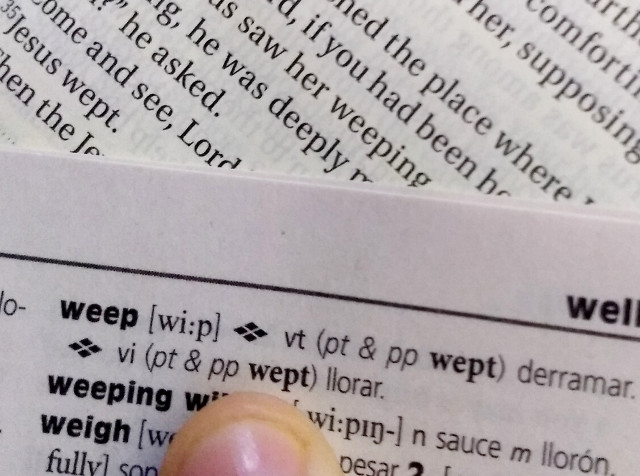The Translation
Before I begin, you should know that I am NOT AN EXPERT on manuscripts or biblical history. I am stating the information I found through research. This information is summarized and may require further clarification. Thank you.
The Bible is an ancient book written over thousands of years. Copies are sold today in hundreds of languages. In my last post, I looked into how and when the Bible was written. Today I’m looking into the history of English Bible translations.
VULGATE
Almost as soon as Emperor Constantine had his 50 copies of the Bible made, early church members began translating it into other languages so they could spread the gospel message to as many people as possible.
In the 4th century, Pope Damasus commissioned a scholar known today as St. Jerome to create a new Latin translation of the Bible. Jerome used only the earliest Latin texts and Hebrew or Greek sources to create his translation. It was called the Vulgate.
JOHN WYCLIFFE
John Wycliffe was born in 1320. The Roman Catholic Church held absolute power in the Middle Ages. Wycliffe studied the Bible at Oxford University and learned Latin and Greek. He realized the teachings of The Church and the words of the Bible didn’t match up. As time went on, Wycliffe wanted to make the Bible’s teachings clear.

Wycliffe wanted to translate the Bible so everyone could read it. He and some others finished the translation, known as the Wycliffe Bible, in 1384. The Church was full of rage and declared Wycliffe a heretic in 1415. The kicker? Wycliffe had died in 1384. The Church ordered all copies of his translated Bible burned, and his body dug up and also burned. His ashes were flung into the River Swift. Despite these severe actions copies of the Wycliffe Bible survive today, a magnificent feat considering that each copy was made by hand.
PRINTING PRESS
Mechanisms for printing had been invented in China long before Johann Gutenberg developed his printing press. However, Gutenberg’s innovations were game-changing. In 1455 the Gutenberg Bible became the first full-scale work printed for in Europe with moveable blocks. Soon, printing shops opened in European countries and the Bible could not only be translated but printed and put into the hands of everyday people. Printed Bibles in Latin, Hebrew and Greek were common.
WILLIAM TYNDALE

William Tyndale was born in 1490. He attended Oxford and Cambridge Universities. Tyndale was good with languages and learned several. He began translating the Bible into English, which was still considered heresy. As a result, Tyndale fled to Germany.
Persecuted and on the run, Tyndale continued his work on the English Bible. He completed a full New Testament in 1526 (later revisions were made) and the Pentateuch in 1530. In 1536, Tyndale was betrayed. Church officials had him strangled to death, then his body burned at the stake for his crimes. The church burned Tyndale’s translations if found. Fortunately, some copies exist today.
THE GREAT BIBLE
In 1538 Henry VIII commanded that every parish should have a copy of the Bible in English, placed somewhere convenient in the church. Because of the sheer size of this Bible, it was called The Great Bible. It was the first authorized Bible. After it came several versions of the English Bible, most of which I don’t have room for in one post.
KING JAMES

When King James I took the English throne, the different denominations were constantly fighting. He called a council where John Reynolds’ suggestion of a new translation was accepted (to simplify a long tale). James appointed 50 scholars of various denominations to work on the translation, which went through vigorous trials to test its accuracy and language. The translation was meant to be understood and accepted by everyone. After many revisions, the King James Version became THE STANDARD for English translations, though other versions of the Bible could still be printed.
MY THOUGHTS
I’m glad I can have the bible in my language today. I still find it surprising how long it took to get an English translation. What surprises you most about the history of the English translation? Let me know in the comments.
CONCLUSION
The Bible has gone through many translations. This ancient book can now be understood and read by people all over the globe. The next time you see a Bible, think about all the hard work that was put into it JUST so we could read it for ourselves.

